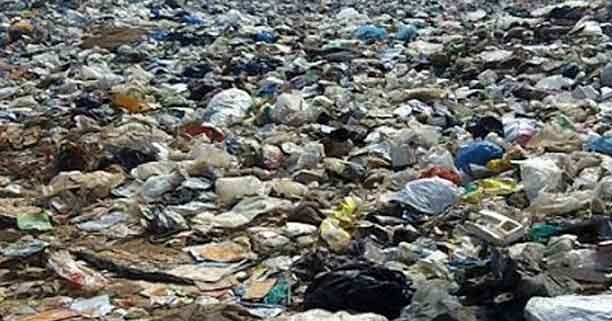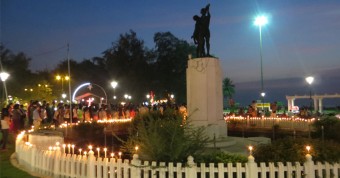And the Controversy Surrounding it
No one doubts the need for a new garbage treatment plant for North Goa. Just take one look at the ubiquitous garbage strewn about the state and the need is clear. But for the people of Saligao, who have suffered for 26 years from an uncontrolled garbage dump in their midst, the site of the proposed new plant – just a short distance away from the current dump – is a big problem. And they’ve organized to fight it.
The garbage at Salmona Hill in Saligao was first illegally dumped into a huge, empty laterite quarry that today has overflowed into a gigantic sea of garbage, estimated at 30,000 tons. By 2013, the waste had reached 90.7 tons per day from Calangute and Candolim alone, not counting the tons of garbage that comes in from the villages surrounding Saligao. Today, it is the largest garbage dump in Goa.
The government is now proposing to install a modern garbage treatment plant on a site that is even closer to the beloved Salmona Spring than the existing dump – a proposal vehemently opposed by locals, who have suggested an alternative site some 700 metres away. The garbage wars of Saligao are thus in full swing.
Garbage has been dumped illegally on the Salmona hill in Saligao since 1987. For all these years, this has caused problems for villagers living at the base of the hill and the surrounding areas of not only Saligao, but also of Candolim, Calangute and Pilerne. Since the garbage is unsegregated, it contains tons of rotting food waste from hotels, medical waste, plastics, rubber, metal, glass and other non degradable material.
The entire plateau is a huge laterite aquifer, acting like a sponge. During the rains this sponge soaks in pure rain water and stores it. During the rest of the year, the aquifer filters the water into the three surrounding springs, as well as the drinking-water wells of the three villages. The toxic material from the pit filled with garbage has seeped into this spongy formation and from there into their water table. It has contaminated the medicinal Salmona Spring water, which is of great importance to the locals.
Chief minister Manohar Parrikar has directed the department of science, technology and environment to initiate land acquisition proceedings for about 94,000 square metres of land on the Saligao-Calangute hill, where the garbage treatment plant for North Goa coastal villages is planned.
The village Panchayat as well as the Communidade of Saligao have passed a resolution opposing the government’s plans. The High Court has also issued a judgment against setting up such a plant on the Saligao Plateau. The government has also been asked to clear up the existing mess, which has not happened till date.
Eknath Oraskar, sarpanch of Saligao says, “Initially garbage was being dumped in a quarry in Salmona and the water from here has seeped and gone deep, polluting all the surrounding springs and wells. The water in this area is not potable anymore.”
He adds, “The land where the garbage treatment plant is to be set up is in Calangute but it is close to Saligao. We are waiting to see how long the government will take to go about with the full process. It may take even a couple of years or so for this garbage to be cleared and the new Garbage Treatment Plant (GTP) to be set up.”
Few disagree with the need for a new garbage treatment plant in North Goa.
The Sarpanch of Parra, Delilah Lobo, states, “The new Garbage treatment plant will be a solution to the garbage issue of the areas on the coastal belt. Perhaps I would like to state this treatment plant is the need of the hour as we see garbage nearly everywhere we go.” Delilah is the wife of Calangute MLA Michael Lobo, and Parra is part of the Calangute Constituency.
Saligao citizens say they are not against the treatment plant, but don’t want it just above the Salmona Hill. They’re demanding the plant be shifted to the proposed alternative site, that there be a dedicated approach road to the plant as opposed to having garbage trucks passing through residential areas of Saligao, and a complete cleanup of the present dump site, among other demands.
So far there’s little indication of any desire to meet their demands. And villagers are filing a new petition with the High Court.




